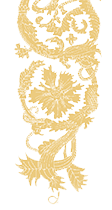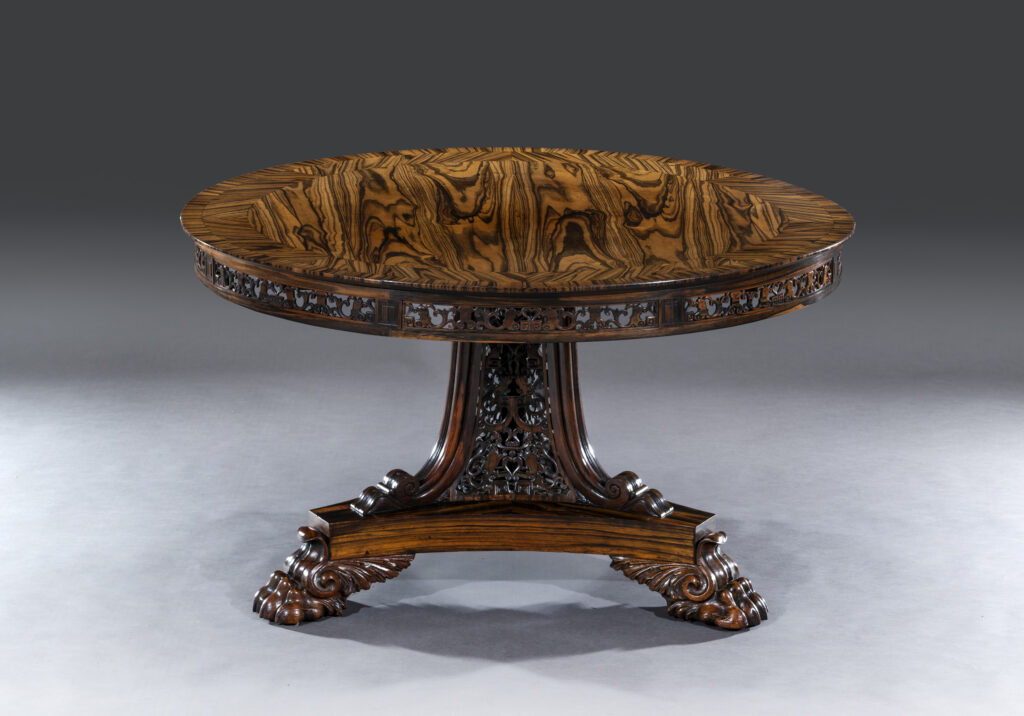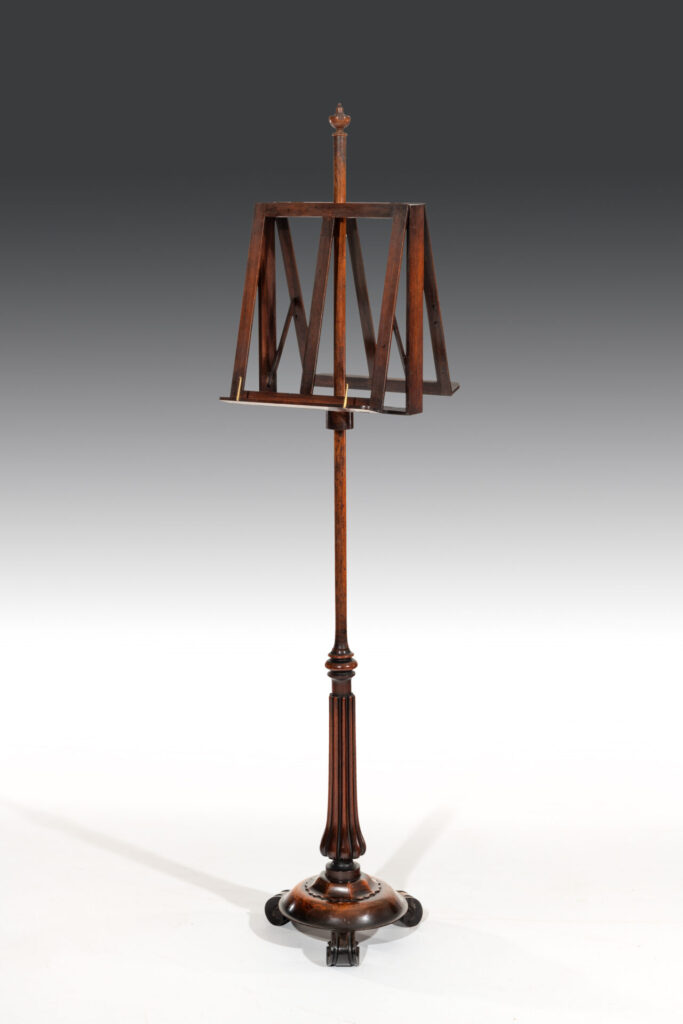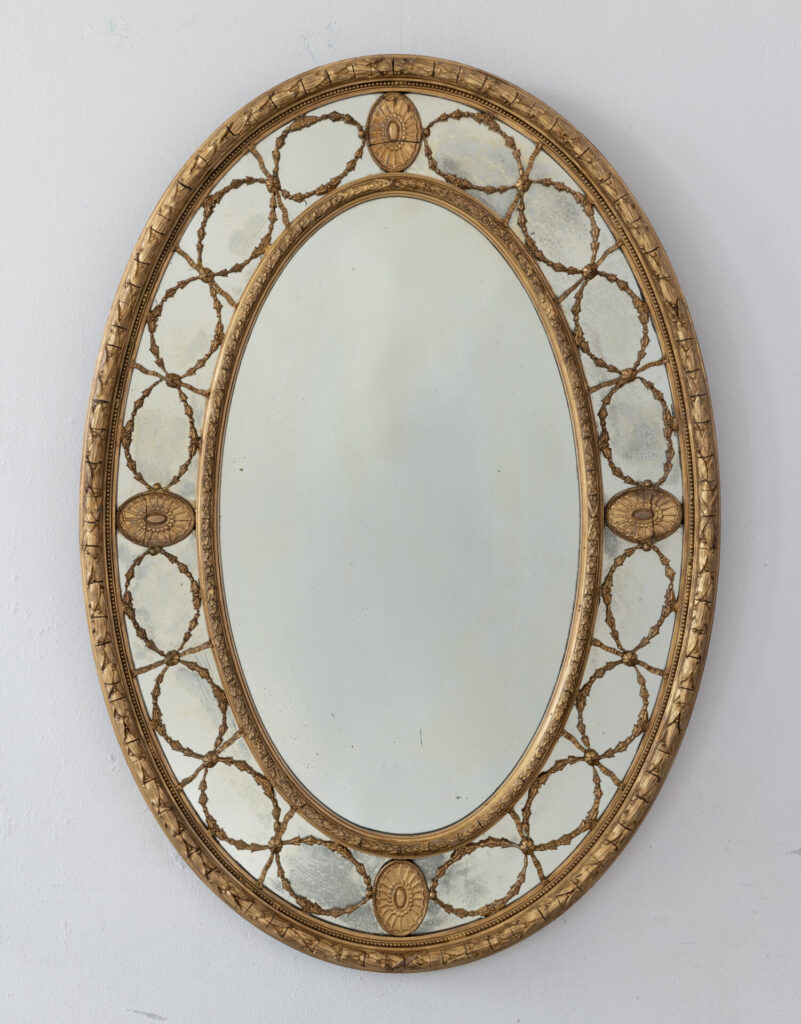Centre Table Attributable to Holland and Sons
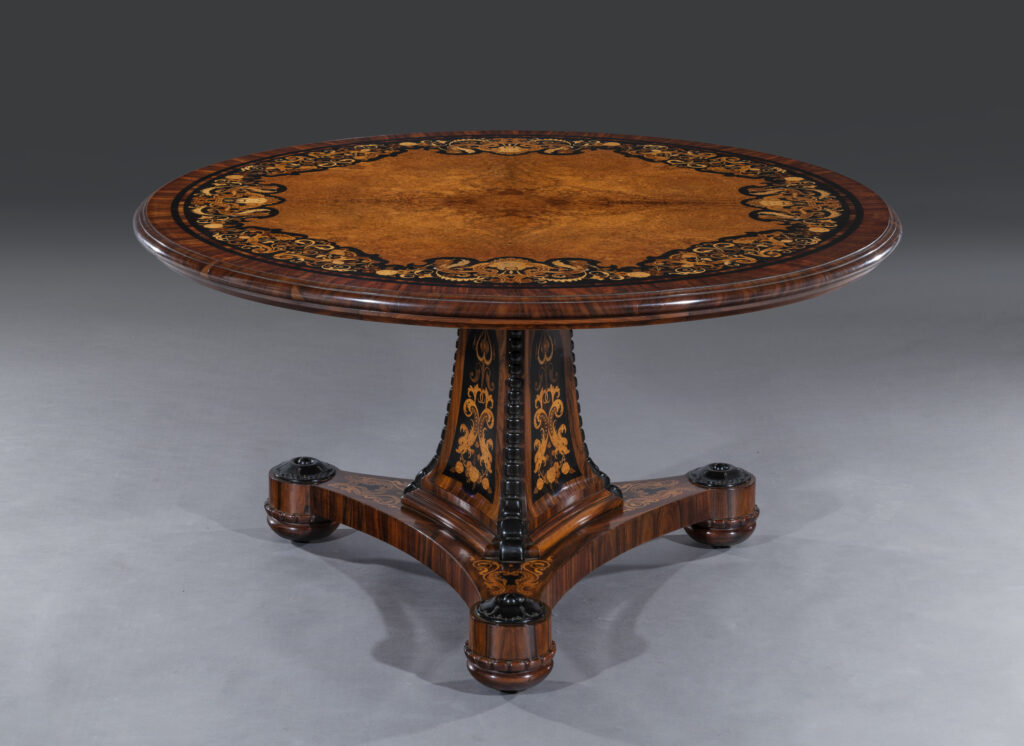
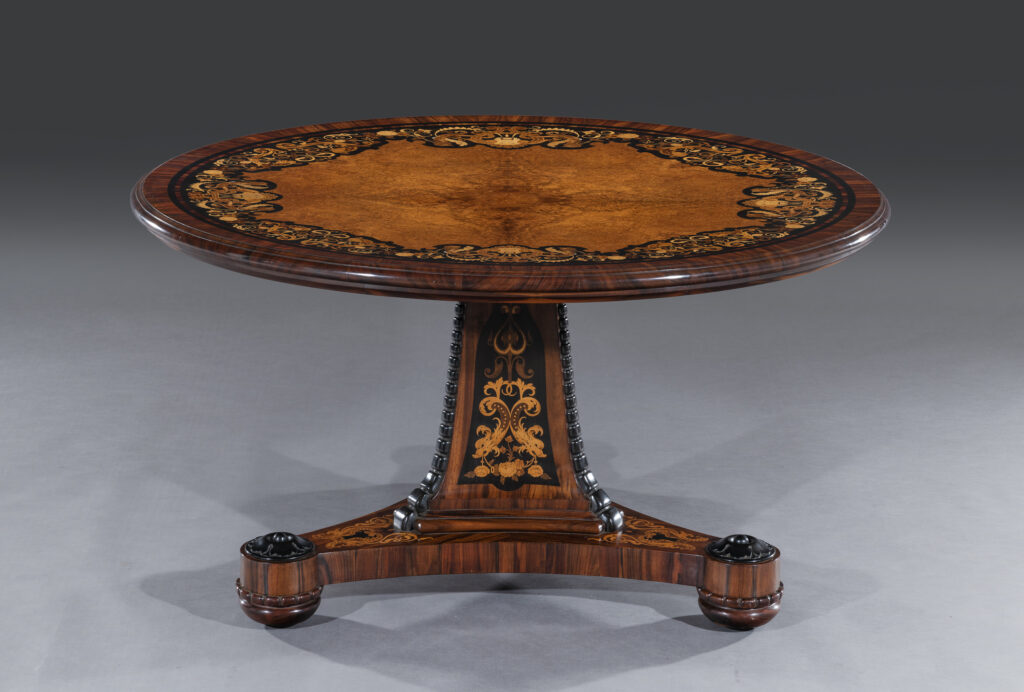
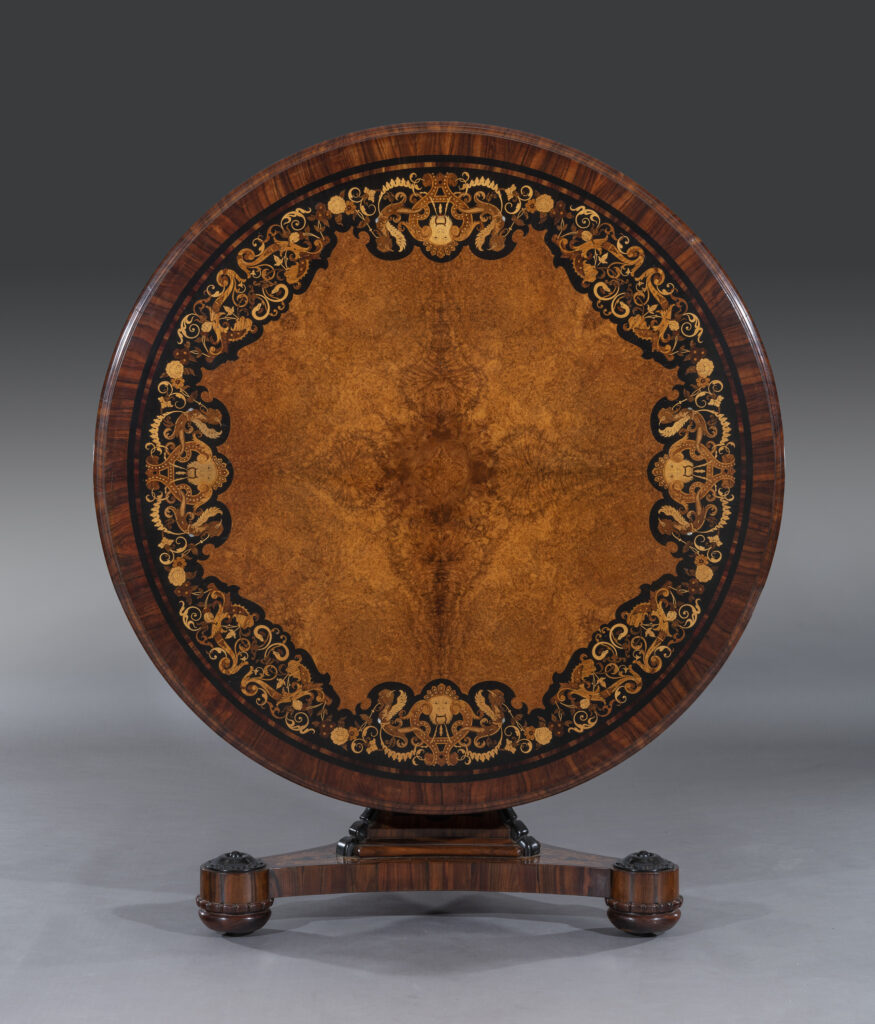
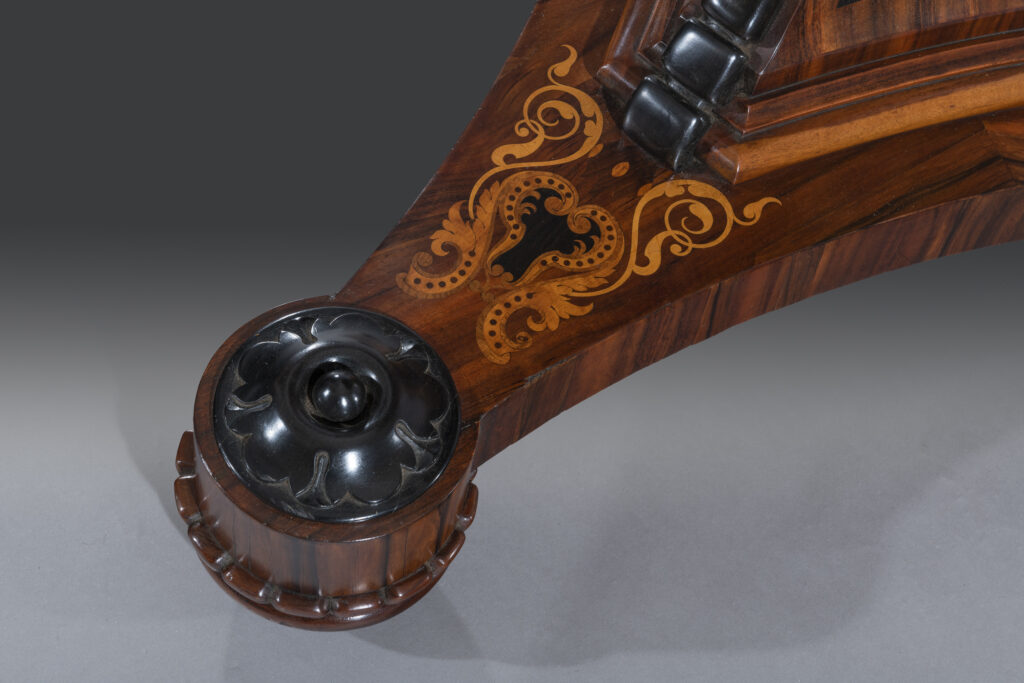
Centre Table Attributable to Holland and Sons
England
circa 1850 - 1860
A superb mid 19th century gonçalo alves, amboyna inlaid centre table of exhibition quality.
The circular top is quarter veneered with amboyna and profusely decorated around the perimeter. The ebony, walnut, boxwood, amboyna, satinwood and mother of pearl inlays that surround the edge are bordered and crossbanded in gonçalo alves and ebony. The Greek god Bacchus is depicted and flanked with mythical winged griffins and centred with a harp shaped motif. The figures are surrounded with bunches of flowers, scrolls and swags. The inlay is sharp and crisp and framed within an ebony border.
The tilt-top table has a shallow frieze made of solid gonçalo alves mouldings that have been shaped and rounded.
The table top sits above an inlaid triform pedestal base. Each panel to the pedestal is framed with gonçalo alves veneers with graduated solid ebony gadrooned mouldings. The pedestal sits on an inlaid triform plinth base with rounded bun feet supports. The rounded corners to the plinth base have carved ebony mouldings that sit above the carved gadrooned bun feet.
Holland and Sons (1803 – 1942) were extremely good cabinet makers and they specialised in fine quality furniture. Holland and Sons was founded in 1803 by William Holland.
Originally, they were cabinet makers and upholsterers called ‘Taprell and Holland’. In 1843 they changed their name to ‘Holland and Sons’ with William Holland in control, a relative of the well known Regency architect Henry Holland. They were based at 19 Marylebone Street, London.
Holland and Sons soon started to expand and by 1851 they employed over 350 cabinet makers. In 1852 they moved premises when they took on the prestigious firm of Thomas Dowbiggin of 23 Mount Street, who had previously made the throne for Victoria’s Coronation. Holland and Sons worked successfully not only as furniture makers but also as undertakers and became responsible for the Duke of Wellington’s funeral.
William Holland had the firm expanding at a rapid rate and became so well known, they became cabinetmakers and upholsters to the Queen. Their first commission was for Osborne House, Queen Victoria's house on the Isle of Wight, in 1845, supplying furniture in the Queen’s favourite design, ‘Louis XVI style’ from France. They continued to supply furniture for Osborne House and gained further commissions for Windsor Castle, Balmoral and Marlborough House. Holland and Sons also worked for many leading institutions such as the reform Club (we have also supplied the reform club with our antique furniture in the past), the British Museum and the new Houses of Parliament. They were part of many of the important international exhibitions including London in 1862, Vienna in 1873, Paris in 1867 and 1872. They gained worldwide fame for their magnificent designs and quality cabinet-making throughout the Victorian era. Holland and Sons stayed as a family run business, but sadly closed in 1942.
Condition
Excellent
Dimensions
Height 74.00cm (29.13 inches)
Diameter 124.50cm (49.02 inches)
Stock No: 11301
£28,000.00
In-stock